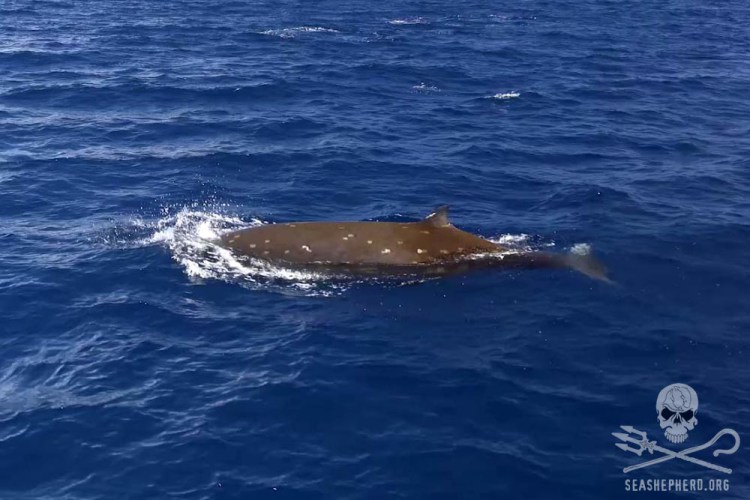Sea Shepherd Concludes Research Expedition on Elusive Cuvier’s Beaked Whales
Published by Sea Shepherd Conservation Society
Mexican scientists on board R/V Martin Sheen recorded whale encounters and added to photo ID catalogue during Divina Guadalupe III
Sea Shepherd recently wrapped its fall research project, Divina Guadalupe III, to study Cuvier’s beaked whales at Mexico’s Guadalupe Island, recording 22 encounters and increasing their photo-ID catalogue to 69 different individuals.
In November, a group of Mexican scientists, led by research leader Gustavo Cardenas Hinojosa and Colombia chief scientist Andrea Bonilla Garzon, sailed the non-profit’s research vessel, the R/V Martin Sheen. The group’s destination was Mexico’s Guadalupe Island, some 150 miles off the west coast of Baja California Peninsula.
The goal was to continue the scientific work begun during the first two previous Divina Guadalupe projects in 2016 and in May of this year, respectively.
Cuvier’s beaked whales are considered the most extreme mammal divers in the world, with the ability to dive down to almost 10,000 feet (3000 meters). They can stay underwater for up to two hours and only need a few minutes of surface oxygen before going back down. Their exceptional diving ability makes them elusive to humans and challenging for scientists to study.

Divina Guadalupe I
During the inaugural expedition of Divina Guadalupe in October 2016, twenty-nine groups of Cuvier’s beaked whales were encountered in a two-week period, including two mother-and-calf pairs. This is the highest number of sightings of Cuvier’s beaked whales ever recorded worldwide over such a short time.
Twenty-nine of the sighted animals were individually photo-identified from their natural markings and were added to the existing catalogue of Guadalupe Island.
These findings suggested to scientists that the area around Guadalupe Island is a key habitat for Cuvier’s beaked whales and a prime destination for scientists to study these mysterious mammals.
Divina Guadalupe II
When Sea Shepherd returned to the location in May 2017 with scientists for Divina Guadalupe II, the crew of the R/V Martin Sheen captured never-before- seen drone footage of a mother and calf pair of Cuvier’s beaked whales.
Over the course of the expedition, there were 24 sightings of Cuviers’, along with two pairs of mothers with very young calves. One calf had been born after the first Divina Guadalupe project.
The sightings showed that Guadalupe could be a breeding ground for these whales.
The scientists aboard the vessel also deployed two acoustic devices to compare their efficacy to detect echolocation clicks of dolphins and beaked whales.
Divina Guadalupe III
In November, when the R/V Martin Sheen and the scientists returned for Divina Guadalupe III, they recorded a total of 22 encounters of Cuvier’s beaked whales.
(Additional sightings also included 23 sightings of bottlenose dolphins and one minke whale.)
The collected photographic data taken in November increased the photo-ID catalogue of Cuvier’s beaked whales around Guadalupe Island to 69 different individuals. Seventeen were previously seen before in the area. One individual recorded was spotted 13 times since 2009.
“These results support our hypothesis that the Cuvier’s have a high fidelity to the island,” said Cardenas Hinojosa.
Additionally, the sightings of paired mother and young calves throughout all three Divina Guadalupe research projects indicate the calves were likely born at the island and support the hypothesis that the island could be an important breeding area for this elusive and rare species.



Read the full article at: https://seashepherd398.com/2017/12/18/sea-shepherd-concludes-research-expedition-on-elusive-cuviers-beaked-whales/



